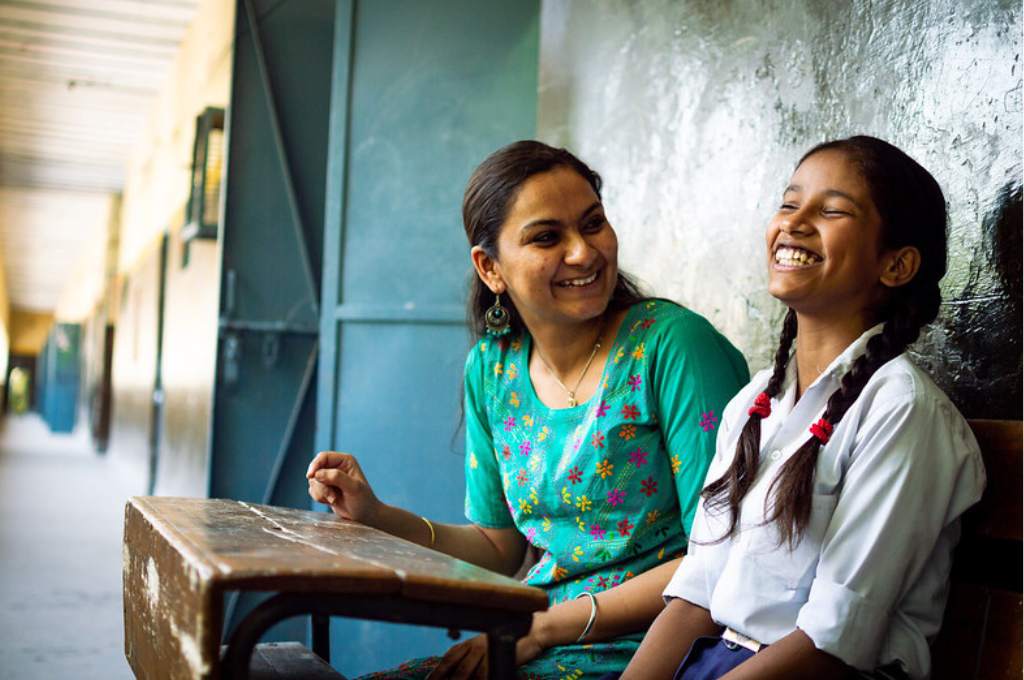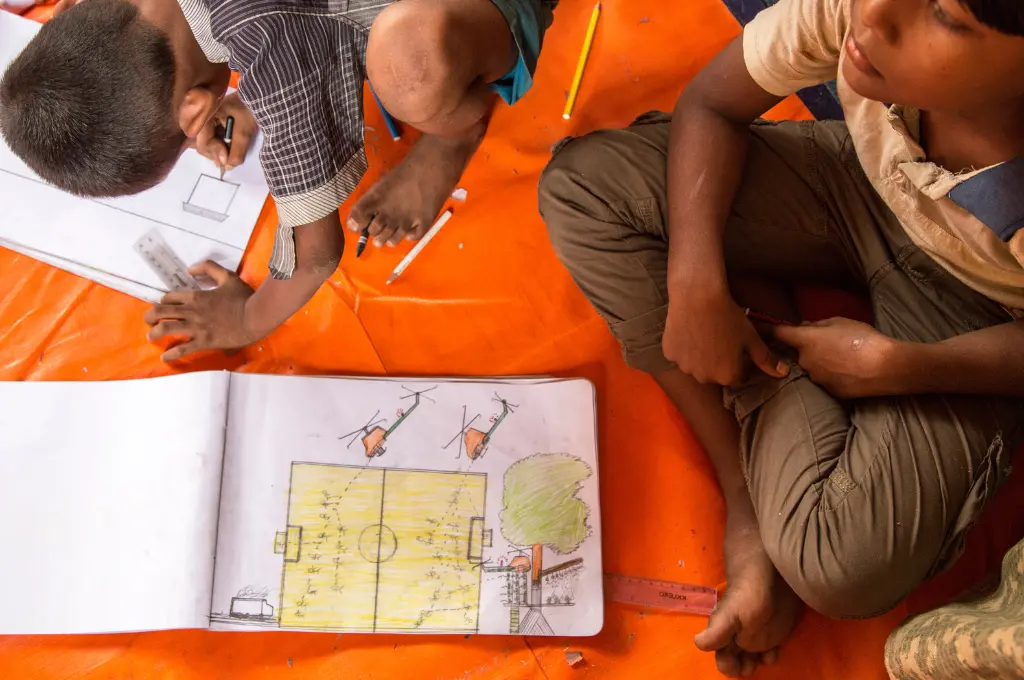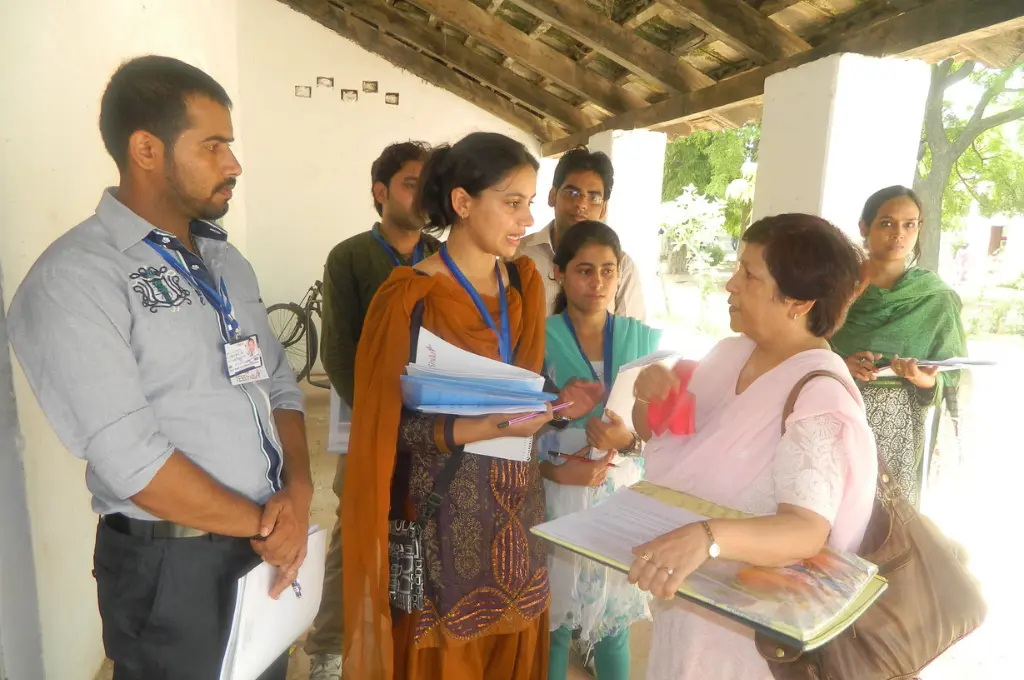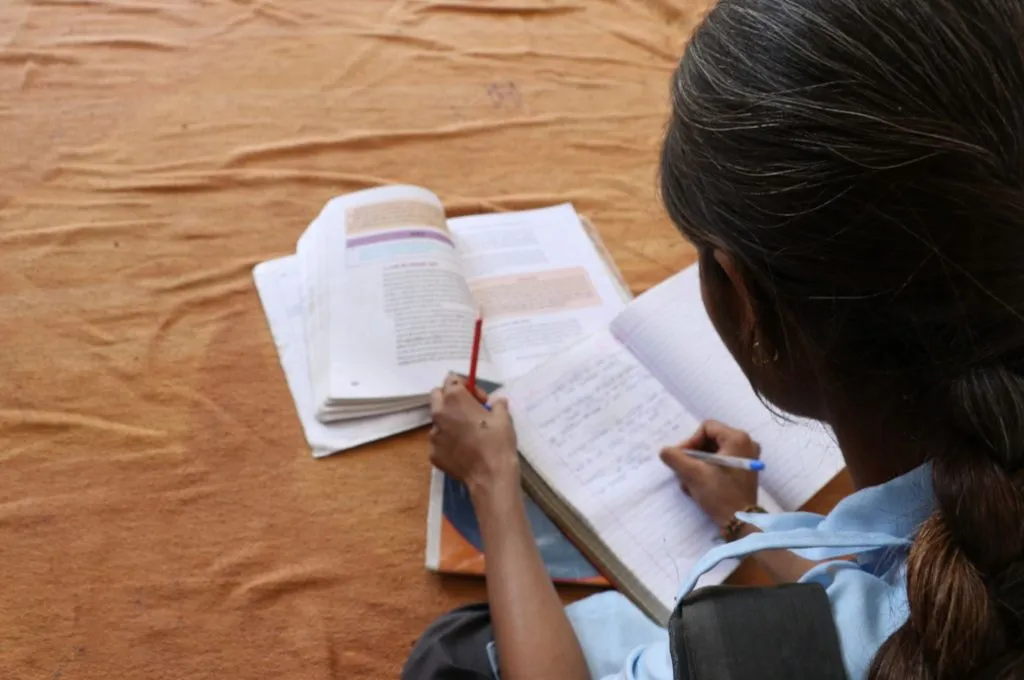In 2015, India adopted Sustainable Development Goal (SDG) 4, which seeks “to ensure inclusive and equitable quality education and promote lifelong learning opportunities for all” by 2030. India’s National Education Policy (NEP) 2020, launched a few years later, defined a framework to help achieve this goal. The NEP advocates for an education system with a safe and stimulating learning environment that would offer a range of experiences that creatively engage students and help them become critical thinkers.
But can a system that has primarily relied on monitoring, corporal punishment, and rote learning deliver the goals of the NEP? What will it take for education officials at the state, district, and block levels, and for school leaders and teachers to adapt to the radical changes the NEP proposes?
Behavioural change in education
The success of educational initiatives—whether in foundational literacy and numeracy or teacher professional development—depends on the mindset of key stakeholders and how they perceive their own and others’ roles. This often necessitates a change in behaviour.
Behavioural change in school education is a relatively young field. It involves changing the behaviour of teachers and school administrators through a series of small but sustained techniques, or behavioural nudges, anchored in feedback, reflection, and action planning—the key design elements of behavioural change. The long-term objective of this approach is to radically improve education through systemic change.
At Centre for Intrinsic Motivation (CIM), we work with the education system and have used behavioural nudges and techniques to change teacher and administrator behaviours.
We work closely with the State Council of Educational Research and Training (SCERT), the body in charge of teacher development and training in every state, to enable implementation at scale. CIM sets up a core design and implementation team at the SCERT, co-creates content for the programme with them, and trains them to run it in that state.
One of the first things we do is elect a district champion, who could either be a District Institute of Education and Training (DIET) principal or a DIET facilitator. We conduct a full learning cycle for them and mentor them throughout the journey. District officials work closely with block and cluster officers, and the latter work with schoolteachers, conducting monthly teacher network meetings, classroom observations, and skill development workshops using the content that we develop.
Our interventions in Delhi, Karnataka, and Tamil Nadu offer valuable insights into how these techniques can positively impact the attitudes of district officials, teachers, and students, leading to better classroom environments and sustainable change within the education system.
1. Facilitate self-assessment for teachers
Research has established that teacher beliefs determine teaching behaviour. If teachers believe that students can learn irrespective of their social and economic backgrounds, they bring that belief to their classroom practice. But how can teachers’ beliefs be assessed?
We begin with a module on self-reflection, which involves several open-ended discussions that attempt to understand what teachers think. We ask them a series of questions and present them with a range of situations, and the teachers’ responses to these prompts tell us about their mindset—whether they feel students are capable of learning something new, whether teachers themselves can learn or admit to their shortcomings, and more. We often encounter perceptions such as: “this student cannot learn because they come from a poor economic background”, or “there’s no point in wasting time on ‘dull’ students”.
Once we identify the connection between teachers’ attitude and what they practice, and spot the gap between practice and desired outcome, we develop further modules. The insights from these sessions are funnelled into action plans that teachers take to the classroom to test. Students’ responses to these fresh approaches—which include a change in the way teachers address them and new activities designed for them—support or help disprove the methods tested. This evidence from the classroom aids the creation of follow-up sessions on cultivating a growth mindset among teachers.
Mentoring teachers, supporting them to engage in deep conversations, and nudging them to reflect on their biases and their approach to teaching have contributed to a shift in attitudes. This attitudinal shift is key to teachers imbibing new pedagogies and technologies in their classroom practices.

2. Build self-esteem
One of the main impediments to exemplary teacher performance is low self-esteem. Often, officials and teachers are jaded about their roles. Their low motivation is driven by the poor quality of teacher education, inferior service conditions, lack of teacher autonomy, and few avenues for continuous professional development and support. Teachers lack the confidence to share, question, and think out of the box. We have found that providing them close mentoring and support has encouraged teachers to reconnect with the larger purpose of education and become proud of their role.
One of the ways we boost their confidence is through a module called ‘Building Connect’ that fosters a culture of trust and positive communication between teachers and their mentors. These mentors are fellow teachers selected from the more proficient among them. Those selected often had no prior idea of what mentoring entailed. When we explained it to them, they demurred, saying they lacked the confidence to mentor others. But we worked on developing their leadership skills through a series of small nudges.
In Delhi, we saw an increase of 19 percent in the self-esteem of teaching staff over four years.
We made the mentors aware, first and foremost, that their teaching methods were good and there was merit in sharing them with others. Realising that they were adding value not just to their own professional development, but also to that of their colleagues, boosted mentors’ self-esteem and confidence. We used the same method to identify teacher coordinators at the school level.
The next step was to improve collaboration and engagement between mentor teachers, teacher coordinators, and district officials to create a sense of ease around asking questions, making mistakes, and appreciating effort.
In Delhi, we saw an increase of 19 percent in the self-esteem of teaching staff over four years. A study done by the Dilshad Garden DIET in Delhi found that the majority of teachers showed increased confidence and motivation owing to the sharing of strategies, peer observation, and lesson planning during teacher network meetings.
3. Recognise and celebrate
Teachers crave platforms that recognise the difficult work they are doing. Creating communities of practitioners at the cluster and district levels has created avenues for them to be celebrated by both peers and government officials. Such appreciation has driven teachers in Tamil Nadu to share videos of their best practices with other teachers in the state, on WhatsApp and Padlet.
In Delhi, teachers who become part of the teacher network meetings are motivated to apply for the role of teacher coordinators and mentor teachers. The recognition they receive motivates them to continue conducting network meetings and supporting their peers, irrespective of the state mandate.
In Karnataka, recognition through cluster-level meetings has increased teacher self-esteem and confidence, furthering engagement with peers and officials. This evidences the genuine need for teachers to learn from one another. State governments can focus on identifying best practices and develop and diffuse these innovations within the system.
4. Encourage critical thinking
A central component of driving behavioural change is asking ‘why’. Nudging education officers to think about the ‘why’ of their policies and actions has sparked critical thinking. District review meetings have become more structured, and officials have started using data to reflect on the quality of their interventions. For example, in Karnataka’s Chitradurga district, the DIET principal wanted to understand how the post-COVID learning recovery programme was being implemented. Rather than ask for a status report, he encouraged block officials to discuss the teachers’ challenges and offer them support.
The CIM programme manager worked with his team to create Google forms to gather teacher feedback. CIM helped the DIET analyse this data, which revealed that many teachers faced two challenges: maintaining student portfolios for assessment and practising the suggested learning recovery activities. Based on this data, the district prepared a support plan for the teachers. Instead of reprimanding them for their lack of performance, block and cluster officials sought to understand the underlying problems and organised capacity-building workshops for them. They encouraged teachers to discuss their challenges related to student portfolios, clarified their doubts, and assisted them in contextualising action plans based on the individual needs of their students.
“In most classrooms, only the children who know the right answers raise their hands, but I aim to create a classroom where every child participates,” shared a teacher from Panchayat Union Primary School, Kannigapuram, a two-teacher school in the Marakkanam block of Tamil Nadu’s Viluppuram district.
CIM closely supports district officials through regular coaching calls and in-person meetings. We accompany them on teacher feedback sessions and classroom observations and offer feedback on the kind of questions they ask and the support they provide the teacher.
In Karnataka, coaching calls confirm that officials are better able to connect to the overall purpose of their work. The calls have also evolved greatly. From conversations that required a lot of probing and effort on our side, most of them are now led by the officials themselves and focus on teacher development and problem-solving.
The focus of officials during school visits and classroom observations has also changed. Earlier, they largely sought feedback on the administrative aspects of education delivery—such as attendance, infrastructure, and availability of books—and whether data was updated on the state’s management information system.
After several cycles of behavioural nudges, district officials now provide teachers with feedback on their lesson plans. They ask more open-ended questions, focusing on the quality of the teaching–learning process, challenges the teacher might face, how much of the lesson planning and execution the teacher was able to do on their own, and how often they collaborated with other teachers.
When a district coordinator changes their approach to teacher support and feedback, a ripple effect is seen in the quality of support received by teachers across the district. And teachers, in turn, rearrange their priorities in the classroom.
Behavioural bottlenecks
Behaviour change interventions are slow to execute because they necessitate attitudinal shifts. Facilitating such shifts in the education system isn’t easy. In the beginning, we faced resistance from both state officials and teachers. Education officers are tasked with multiple monitoring duties. Providing developmental feedback to teachers is time-consuming and requires the officers’ presence in the classroom. Many officials felt it was not part of their role to mentor teachers or observe classroom teaching processes, which also entails asking teachers about their lesson plans and preparations before coming to class and about their observation of student engagement. Officials would have to engage more deeply with teachers to obtain this information; this would take them and the teachers into deep and uncomfortable territory.
One of the teachers we worked with told us that he believed he was never wrong.
School principals also believed they only had to manage teachers and not support their professional development. They were also uncomfortable about assigning leadership roles to teachers. Coaching plays an important role in changing these perceptions.
Teachers, on the other hand, were defensive and resistant to feedback on their classroom practices. For example, all teachers undergo a prescribed number of hours of teacher training, but the implementation of that training in the classroom is unaccounted for. Now, to be questioned on student engagement and be told that students are losing interest wouldn’t go down well with them.
One of the teachers we worked with told us that he believed he was never wrong. After all, teachers are expected to know everything! After a series of behavioural change sessions, he says he now feels comfortable about acknowledging his mistakes and is open to feedback from not only his peers, but also from his students.
Teachers also disclosed their initial reluctance to being observed by peers while taking classes and about discussing their challenges with officials—these activities led to them feeling threatened and judged. We had to help them realise that the officials were not there to test and grade them, but to support them to become better at what they do. The onus is on the official to display behaviour that reassures teachers of the former’s concern for them.
Work in progress
Building trust is a major step in overcoming these challenges and takes several years. But it can be achieved. Strong political and administrative will, along with educational leadership at both state and central levels, can galvanise long-term systemic change. It can do this by embedding key elements of behaviour change within district empowerment initiatives, policies, and professional development programmes.
—
Know more
- Read this article to learn how behavioural insights can be used to increase parent engagement in their children’s learning.
- Read this article to learn how a school in Delhi is changing teacher behaviours through role modelling.
- Read this article to learn how a livelihoods programme used a behavioural nudge to help low-income households create new assets.





